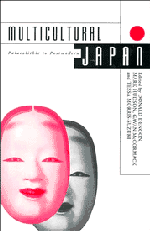Book contents
- Frontmatter
- Contents
- List of Figures and Tables
- List of Contributors
- Abbreviations
- Introduction
- Part 1 Archaeology and Identity
- Part 2 Centre and Periphery
- Part 3 Contact with the Outside
- Part 4 The Japanese Family
- Part 5 Culture and Ideology
- Afterword: Diversity and Identity in the Twenty-First Century
- Index
Afterword: Diversity and Identity in the Twenty-First Century
Published online by Cambridge University Press: 05 November 2011
- Frontmatter
- Contents
- List of Figures and Tables
- List of Contributors
- Abbreviations
- Introduction
- Part 1 Archaeology and Identity
- Part 2 Centre and Periphery
- Part 3 Contact with the Outside
- Part 4 The Japanese Family
- Part 5 Culture and Ideology
- Afterword: Diversity and Identity in the Twenty-First Century
- Index
Summary
In this Afterword, we briefly discuss new developments relating to the themes of this book and make some corrections to the first edition. Since the mid-1990s, cultural diversity and its relationship to national identity has become a topic of intense debate within Japanese society. The principal contributors to this debate include the authors of several chapters in the volume. Amino Yoshihiko has published a number of widely discussed works drawing attention to the fluidity of the historical boundaries of Japanese identity. His study ‘Nihon’ to wa nani ka (What is ‘Japan’?), the introductory volume to a 26 volume series surveying Japanese history, highlights both the regional and cultural diversity which has always characterised Japanese history and the long history of cross-border interactions between inhabitants of the Japanese archipelago and the surrounding Asian regions. Nishikawa Nagao's works have continued to explore the political construction of the modern Japanese sense of national identity and to expose the ways in which images of ‘the nation's people’ (kokumin) were used to obscure the diversity and contradictions within Japanese society.
Meanwhile, Ueno Chizuko's widely debated study Nashionarizumu to jendā (Nationalism and Gender) seeks to open a space for the expression of a complex personal identity that can transcend essentialised categories of ethnicity and nationality. John Maher's work has also produced further contributions to the understanding of cultural and linguistic diversity in Japan which he helped to pioneer during the 1990s.
- Type
- Chapter
- Information
- Multicultural JapanPalaeolithic to Postmodern, pp. 287 - 292Publisher: Cambridge University PressPrint publication year: 1996



